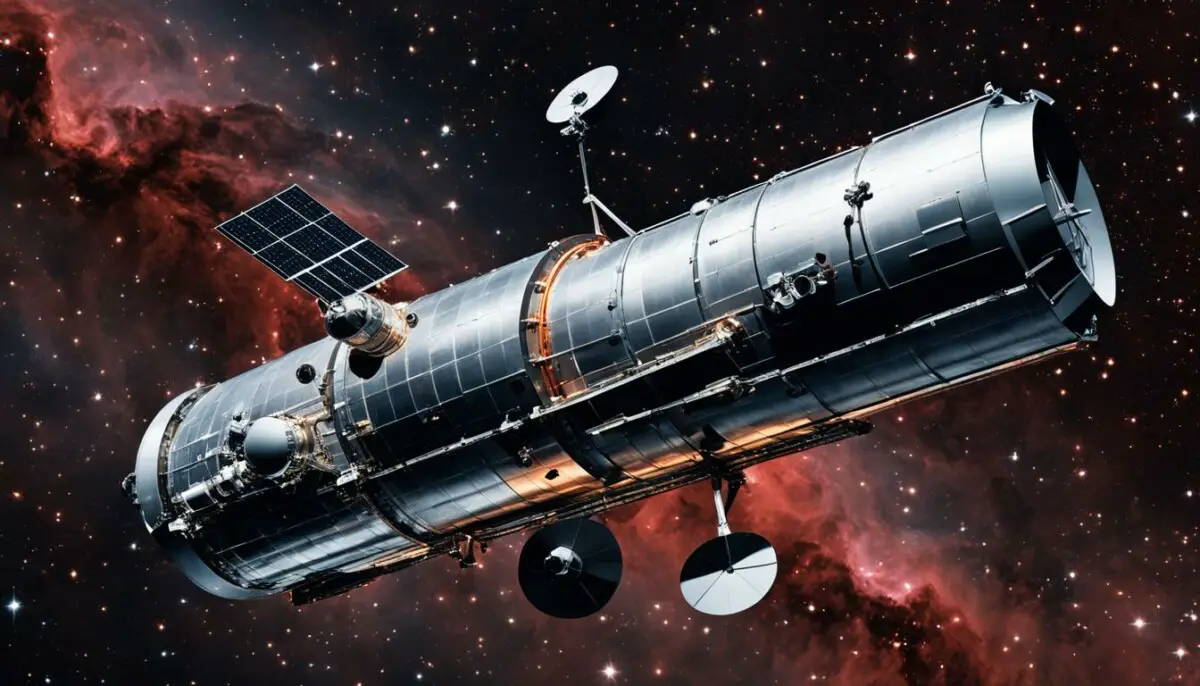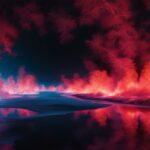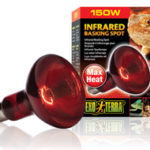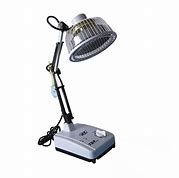Last Updated on 4 months by Francis
Welcome to our journey through the vast reaches of the universe! Today, we embark on an exploration of the capabilities of the Hubble Space Telescope and its ability to observe infrared light. We will delve into the fascinating world of infrared astronomy and discover how Hubble compares to its successor, the James Webb Space Telescope.
When we look up at the night sky, we see stars and galaxies in visible light, but there is more to the universe than meets the eye. Infrared light, which lies beyond the red end of the visible spectrum, holds secrets that can reveal hidden objects and phenomena that are otherwise invisible to us.
So, can the Hubble Space Telescope see in infrared? While Hubble mainly observes the universe in optical and ultraviolet wavelengths, its infrared capabilities are limited. Hubble can observe a small portion of the infrared spectrum, ranging from 0.8 to 2.5 microns, but its primary focus lies elsewhere.
But fear not! The James Webb Space Telescope, often referred to as Hubble’s successor, is designed to primarily observe in the infrared range. Equipped with a larger mirror and advanced technology, Webb will peer further back in time than Hubble and capture the faint infrared signals emitted by distant objects.
Contents
Key Takeaways:
- Hubble primarily observes the universe in optical and ultraviolet wavelengths, with limited infrared capabilities.
- The James Webb Space Telescope is designed to primarily observe in the infrared range and will have a larger mirror than Hubble.
- Webb will be located at the second Lagrange point, approximately 1.5 million kilometers away from Earth.
- The infrared range allows telescopes like Webb to see through dust clouds and study objects otherwise hidden from view.
- Both Hubble and Webb have made significant contributions to our understanding of the universe.
The Wavelength Range of Webb and Hubble
When it comes to observing the universe, the Hubble Space Telescope and the James Webb Space Telescope have distinct capabilities. While Hubble primarily focuses on optical and ultraviolet wavelengths, Webb is designed to operate primarily in the infrared range.
Hubble Telescope Infrared Capabilities: Hubble does have some limited infrared capabilities, allowing it to observe a small portion of the infrared spectrum. It can detect wavelengths ranging from 0.8 to 2.5 microns. However, its primary emphasis is on ultraviolet and visible light observations.
Hubble Infrared Observations: By observing in the infrared range, the James Webb Space Telescope extends our ability to study the universe. It will cover a broader range of wavelengths, from 0.6 to 28 micrometers, allowing it to capture light emitted by objects that cannot be seen in visible light.
Webb’s extended wavelength range means that it can observe objects such as stars and planets that are forming behind dust clouds, as well as galaxies that are too faint to be detected in the visible spectrum. These infrared observations will provide valuable insights into the early formation of celestial objects and the hidden regions of our universe.
Size Comparison and Orbit Differences
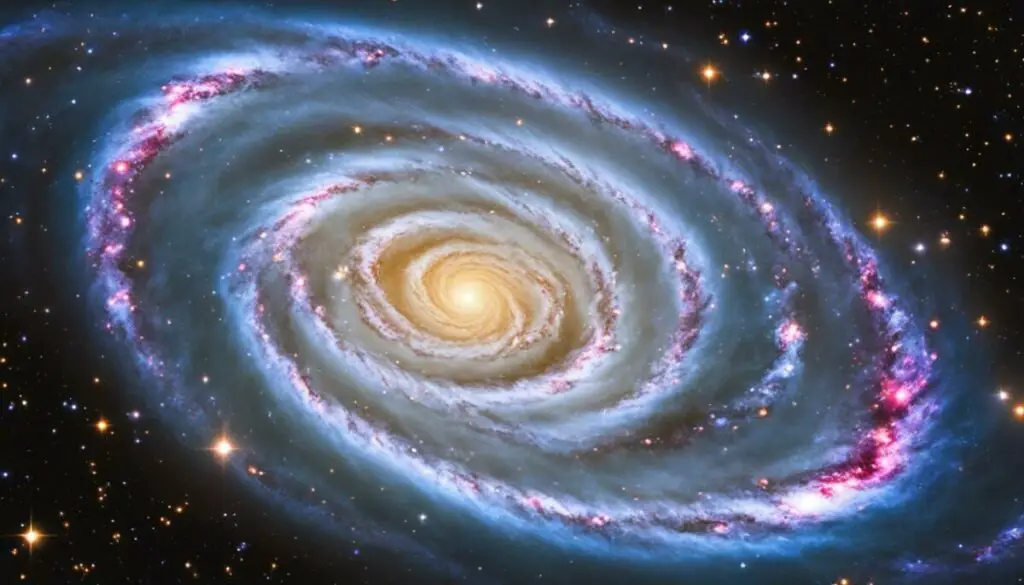
The James Webb Space Telescope (Webb) and the Hubble Space Telescope (Hubble) have significant differences in terms of size and orbit. These differences greatly influence their capabilities and the type of observations they can make.
Webb’s primary mirror is approximately 6.5 meters in diameter, which is significantly larger than Hubble’s 2.4-meter mirror. This larger mirror gives Webb a much larger collecting area, allowing it to gather more light and observe fainter objects. In comparison, Hubble’s smaller mirror limits its ability to capture faint infrared signals.
Furthermore, Webb’s larger field of view and better spatial resolution enhance its infrared capabilities. It can capture more detailed and precise images, allowing scientists to study the universe with greater clarity and depth in the infrared spectrum. This makes it particularly well-suited for capturing hubble infrared telescope images and unlocking the secrets of celestial objects hidden from visible light observations.
Not only do Hubble and Webb differ in size, but they also have contrasting orbits. Hubble is in a close orbit around Earth at an altitude of approximately 570 kilometers, while Webb will be located at the second Lagrange point, 1.5 million kilometers away from Earth. The second Lagrange point offers a stable environment, shielded from solar interference, and allows Webb to observe in the infrared spectrum with minimal disturbances.
These differences in size and orbit make Webb a powerful tool for exploring the infrared universe, capturing stunning hubble infrared telescope images, and expanding our understanding of the cosmos.
Comparison Table: Hubble and Webb Size and Orbit
| Hubble Space Telescope | James Webb Space Telescope | |
|---|---|---|
| Primary Mirror Diameter | 2.4 meters | Approximately 6.5 meters |
| Collecting Area | Small | Larger, allowing for better observation of faint objects |
| Infrared Capabilities | Limited | Enhanced, larger field of view, and better spatial resolution |
| Orbit | Close orbit around Earth (approximately 570 kilometers altitude) | Second Lagrange point, 1.5 million kilometers away from Earth |
The Importance of Infrared Observations in Astronomy

Infrared observations play a crucial role in advancing our understanding of the universe. These observations allow scientists to see objects that are obscured by dust clouds and are invisible in visible light. The Hubble Space Telescope has been instrumental in demonstrating the significance of infrared observations by capturing images of star-forming regions and galaxies in both visible and infrared light.
Infrared light has the ability to reveal hidden treasures in the cosmos. It can unveil the presence of young stars, hidden planets, and distant galaxies that emit infrared radiation due to their redshift. By utilizing infrared telescopes like the James Webb Space Telescope (JWST), scientists can peer back in time and study the early formation of galaxies. These observations provide valuable insights into the conditions that existed shortly after the universe was born.
“Infrared observations allow us to cut through the cosmic fog and explore the hidden depths of the universe, revealing celestial wonders that would otherwise remain unseen.”
Exploring the universe with Hubble infrared images has allowed us to unravel mysteries and discover cosmic phenomena that were previously inaccessible. It has shed light on the birth of stars, the formation of galaxies, and the evolution of our universe. By extending our vision into the infrared, we gain a deeper understanding of the celestial processes that shape our cosmic neighborhood.
The Differences in Engineering and Cooling Requirements
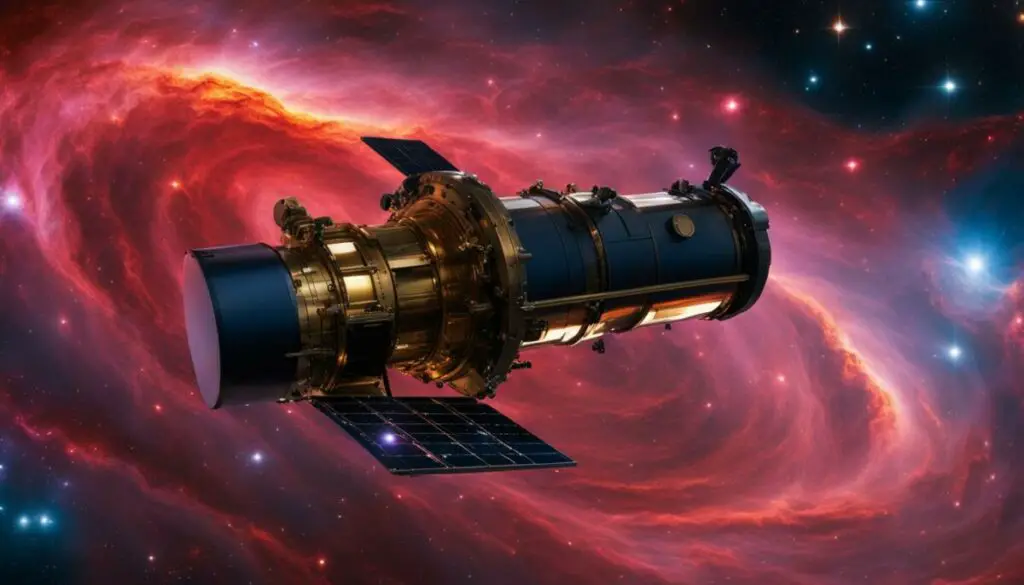
Both Hubble and Webb are remarkable reflecting telescopes that share a similar working principle, but they also possess notable differences in their engineering designs. Let’s explore these differences and how they impact their respective capabilities.
The Mirrors
Hubble’s primary mirror measures 2.4 meters in width, allowing it to collect and focus ample amounts of visible and ultraviolet light. In comparison, Webb’s segmented mirror is an engineering marvel, spanning an impressive 6.5 meters. It is the largest mirror ever to be flown in space, providing Webb with significantly greater light-gathering capabilities compared to Hubble.
Furthermore, the mirrors themselves differ in composition. Hubble’s mirror is made of fused silica, while Webb’s mirror is composed of lightweight beryllium. To enhance Webb’s sensitivity to infrared light, its mirror is coated with a thin layer of gold, optimizing its performance in the infrared range.
Cooling Systems
One crucial aspect of Webb’s engineering is its extensive cooling system. In order to observe the universe in the infrared spectrum, Webb must maintain extremely low temperatures. To achieve this, Webb utilizes a state-of-the-art five-layer sunshield, equivalent in size to a tennis court. This sunshield blocks unwanted light and radiation while simultaneously keeping Webb’s temperature stable and cool.
On the other hand, Hubble’s cooling requirements are less extensive, as its main focus lies in optical and ultraviolet observations rather than infrared. Although Hubble incorporates thermal regulation systems, they are not as elaborate as those required by Webb’s sophisticated infrared imaging techniques.
Visual Comparison
To visually demonstrate the differences between Hubble and Webb’s engineering and cooling requirements, the table below provides a concise summary:
| Hubble | Webb | |
|---|---|---|
| Mirror Diameter | 2.4 meters | 6.5 meters |
| Mirror Material | Fused Silica | Beryllium with a thin gold coating |
| Cooling Requirements | Minimal | Extensive – Utilizes a five-layer sunshield |
The side-by-side comparison in the table and the captivating image above illustrate the significant disparities in engineering and cooling systems between Hubble and Webb. These differences enable each telescope to excel in their specific areas of observation and contribute valuable insights to our understanding of the universe.
Lifespan and Mission Duration of Hubble and Webb
As two of the most prominent space telescopes in existence, the Hubble Space Telescope and the James Webb Space Telescope have made significant contributions to our understanding of the universe. While both telescopes have their own unique capabilities and missions, one important aspect to consider is their respective lifespans and mission durations.
Hubble has been a groundbreaking astronomical observatory for over 30 years, revolutionizing our understanding of the cosmos. Launched in 1990, it has delivered stunning images and valuable scientific insights across a range of wavelengths, including visible and ultraviolet light. With continuous servicing missions and upgrades, Hubble’s lifespan has been extended, and it is expected to continue its operations until at least 2026, provided it remains in good condition.
On the other hand, the James Webb Space Telescope, set to launch in late 2021, has a minimum mission duration of five years. However, unlike Hubble, Webb is designed to operate for a much longer period. Its advanced technology, larger mirror, and optimized instruments allow it to peer deeper into space, studying the universe in the infrared range. Webb’s fuel supply will enable a minimum of 10 years of operations, and there are expectations that it will exceed its original shelf life.
Both Hubble and Webb are invaluable assets to scientific research, providing us with unique insights into the universe. Hubble’s long lifespan has allowed astronomers to make landmark discoveries, while Webb’s extended mission duration holds the promise of even greater advancements in our understanding of the cosmos. Together, these telescopes continue to inspire awe and shape our knowledge of the universe.
Imaging Capabilities and Comparison of Hubble and Webb
Both the Hubble Space Telescope and the James Webb Space Telescope have remarkable imaging capabilities that allow us to capture stunning images of the cosmos. While Hubble has provided us with iconic images of galaxies, nebulae, and other celestial objects in visible and ultraviolet light, Webb’s primary focus is on infrared observations, expanding our view of the universe.
Hubble’s ability to observe in visible and ultraviolet light has allowed us to witness the breathtaking beauty of the universe. From the colorful swirls of distant galaxies to the intricate details of planetary nebulae, Hubble’s images have captivated and inspired us.
“The universe is full of magical things patiently waiting for our wits to grow sharper.” – Eden Phillpotts
Webb, on the other hand, specializes in infrared observations, which enables it to see objects that emit infrared radiation, such as distant galaxies and star-forming regions hidden behind dust clouds. Infrared observations provide valuable insights into the early formation of galaxies and the conditions shortly after the universe was born.
The differences in wavelengths observed by Hubble and Webb may result in variations in the appearance of the images. While Hubble’s images showcase the vibrant colors of celestial objects in visible and ultraviolet light, Webb’s infrared images reveal hidden structures and provide a unique perspective on the universe.
Key Differences in Imaging Capabilities:
- Hubble observes in visible and ultraviolet light.
- Webb specializes in infrared observations.
- Hubble captures vibrant images showcasing the colors of celestial objects.
- Webb’s infrared images reveal hidden structures and provide insights into the early universe.
High-Resolution and Scientifically Valuable Images:
Both telescopes are capable of producing high-resolution images that contribute to scientific research. Whether it’s Hubble’s detailed views of distant galaxies or Webb’s infrared images unveiling hidden star-forming regions, the images captured by these telescopes play a crucial role in expanding our understanding of the universe.
| Hubble Space Telescope | James Webb Space Telescope |
|---|---|
| Observes in visible and ultraviolet light | Specializes in infrared observations |
| Captures vibrant and colorful images | Reveals hidden structures and provides insights into the early universe |
| Contributes to a wide range of scientific research | Expands our knowledge of the cosmos through advanced infrared imaging |
Scientific Goals and Themes of Hubble and Webb
The Hubble Space Telescope and the James Webb Space Telescope have distinct scientific goals and themes that contribute to our understanding of the universe.
Hubble Telescope:
- Investigate the constitution and dynamics of celestial bodies.
- Study processes in stars and galaxies.
- Explore the history and evolution of the universe.
- Provide a long-term space research facility for optical astronomy.
Webb Telescope:
- Search for the first galaxies formed after the Big Bang.
- Understand the evolution of galaxies.
- Observe star formation.
- Study planetary systems and their potential for supporting life.
Both telescopes contribute to a wide range of scientific themes, including the study of exoplanets, galaxies, and the origins of the universe.
International Contributions and Bias in Science
Hubble, a NASA-led project, has benefited from contributions from the European Space Agency (ESA). ESA provided one of Hubble’s cameras and the solar arrays that power the telescope. Additionally, European astronomers are allocated 15% of Hubble’s observing time, further enhancing the collaboration between NASA and ESA.
Efforts have also been made to address bias in science within the Hubble project. The application process underwent changes to reduce bias and ensure equal acceptance rates for proposals from women and men. These changes included anonymizing the proposers and reviewers, eliminating any potential biases in the selection process.
Challenges Faced by Hubble and Webb
Throughout their development and operations, both the Hubble Space Telescope and the James Webb Space Telescope have encountered various challenges. These challenges have tested the resilience of these remarkable instruments, yet they have persevered to provide invaluable contributions to our understanding of the universe.
Hubble’s Technical Issues with its Mirror
The Hubble Space Telescope encountered initial technical issues related to its mirror. During its deployment in 1990, it was discovered that the mirror had a spherical aberration, causing images to be blurred. However, a servicing mission by astronauts in 1993 successfully installed corrective optics, rectifying the issue and restoring Hubble to its full observational capabilities.
Webb’s Delays and Technical Problems
The James Webb Space Telescope has faced delays and cost overruns during its development. These challenges were primarily attributed to project mismanagement and technical difficulties encountered while building the complex, advanced technologies required for Webb’s mission. Additionally, the COVID-19 pandemic created further delays in the final testing and launch preparations.
“Despite the challenges faced by both telescopes, they have overcome obstacles and continue to provide astonishing insights into the cosmic wonders.”
Despite the challenges faced by both telescopes, they have overcome obstacles and continue to provide invaluable contributions to our understanding of the universe. Let’s delve deeper into these challenges and learn how each telescope has triumphed amidst adversity.
Conclusion
The Hubble Space Telescope and the James Webb Space Telescope have revolutionized our understanding of the universe. Through its incredible infrared observations, Hubble has brought us stunning images and invaluable insights into the cosmos. However, the upcoming launch of Webb will push the boundaries even further, allowing us to peer deeper into space and explore the early formation of galaxies.
With its larger mirror and advanced technology, Webb will capture breathtaking infrared telescope images, revealing hidden objects and unraveling the secrets of the universe. These telescopes, working together, are shaping our understanding of our place in the cosmos and the origins of the universe itself.
As we continue to explore the universe with these remarkable telescopes, we can only imagine the discoveries and revelations that lie ahead. The hubble infrared observations have laid the foundation for the groundbreaking research that will be undertaken by Webb, opening up new horizons in our exploration of the cosmos. Together, these telescopes are pushing the boundaries of human knowledge and expanding our understanding of the universe in ways we never thought possible.
FAQ
Can the Hubble Space Telescope see infrared?
While the Hubble Space Telescope primarily observes the universe in optical and ultraviolet wavelengths, it has limited infrared capabilities and can observe a small portion of the infrared spectrum from 0.8 to 2.5 microns.
What is the difference between the Hubble Space Telescope and the James Webb Space Telescope when it comes to infrared observations?
The Hubble Space Telescope primarily focuses on ultraviolet and visible wavelengths, while the James Webb Space Telescope is designed to primarily observe in the infrared range. Webb will have a larger mirror, broader infrared coverage, and better spatial resolution, allowing it to observe objects that emit infrared light, such as stars and planets forming behind dust clouds and faint galaxies.
What are the size and orbit differences between the Hubble and Webb telescopes?
The Hubble Space Telescope has a 2.4-meter mirror, while the James Webb Space Telescope will have a segmented mirror with a diameter of approximately 6.5 meters. Hubble is in a close orbit around Earth at an altitude of approximately 570 kilometers, while Webb will be located at the second Lagrange point, approximately 1.5 million kilometers away from Earth.
Why are infrared observations important in astronomy?
Infrared observations are crucial because they can penetrate dust clouds that block visible light. This allows astronomers to see objects that are hidden from our view, such as young stars, hidden planets, and distant galaxies that emit infrared radiation due to their redshift.
How do the engineering and cooling requirements of Hubble and Webb differ?
Hubble has a single 2.4-meter mirror, while Webb has a segmented mirror with a diameter of approximately 6.5 meters, making it the largest mirror ever flown in space. Webb’s mirror is coated with a thin layer of gold to enhance its sensitivity to infrared light. Hubble’s cooling requirements are not as extensive as Webb’s, which uses a five-layer sunshield to block light and maintain its temperature at extremely low levels.
What is the lifespan and mission duration of Hubble and Webb?
Hubble has been operating for over 30 years and is expected to continue until at least 2026, as long as it remains in good condition. Webb has a minimum mission duration of five years but is designed to operate for much longer, with a fuel supply for at least 10 years of operations.
How do the imaging capabilities of Hubble and Webb compare?
Hubble has provided us with iconic images of galaxies and celestial objects in visible and ultraviolet light. Webb’s primary focus is on infrared observations, allowing it to see objects that emit infrared radiation, such as distant galaxies and star-forming regions behind dust clouds.
What are the scientific goals and themes of Hubble and Webb?
Hubble’s goals include investigating the constitution and dynamics of celestial bodies, studying processes in stars and galaxies, exploring the history and evolution of the universe, and providing a long-term space research facility for optical astronomy. Webb’s mission science goals focus on observing the first galaxies formed after the Big Bang, understanding galaxy evolution, observing star formation, and studying planetary systems and their potential for supporting life.
What contributions have been made by international partners to Hubble?
The Hubble Space Telescope is a NASA-led project, but it has received contributions from the European Space Agency (ESA). ESA provided one of Hubble’s cameras and the solar arrays that power the telescope. European astronomers are allocated 15% of Hubble’s observing time.
What challenges have Hubble and Webb faced during their development and operations?
Hubble experienced initial technical issues with its mirror, which were resolved through a servicing mission by astronauts in 1993. Webb faced delays and cost overruns due to project mismanagement and technical problems, with further delays caused by the COVID-19 pandemic.
What is the conclusion about Hubble and Webb’s contributions to astronomy?
Both the Hubble Space Telescope and the James Webb Space Telescope have expanded our knowledge of the universe. While Hubble has provided iconic images and groundbreaking discoveries in visible and ultraviolet light, Webb will take us even further by exploring the infrared universe and studying the early formation of galaxies.

